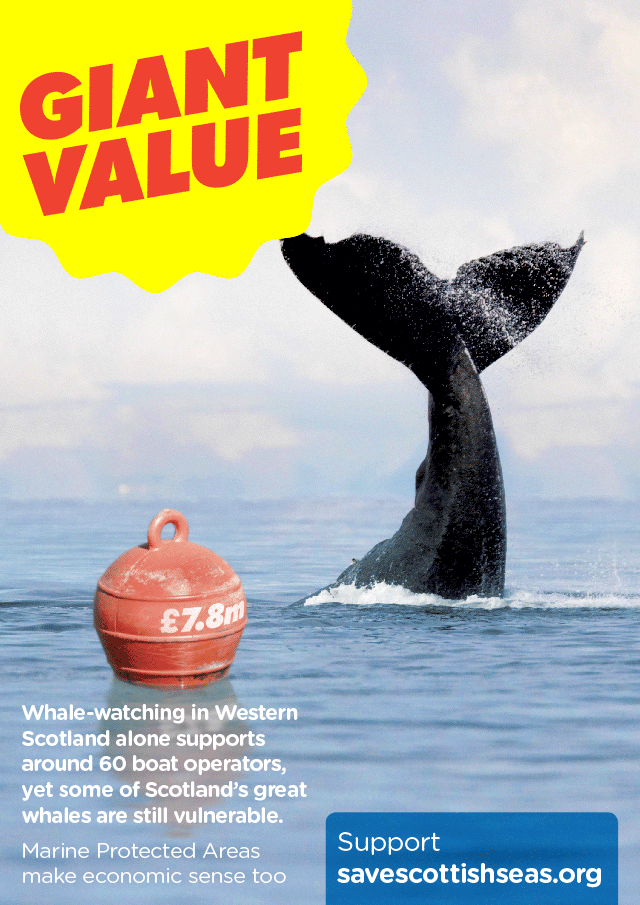This tail belongs to a Humpback whale. Not a lot of people know it, but these majestic mammals visit Scottish waters every year, as well as over 25 other species of whale and dolphin – from minke whales to harbour porpoises.
And just as the whales and dolphins visit our seas, so do people – who visit our shores and charter boats to watch them.
This wildlife tourism generates substantial value to local economies. Dolphin watching in the Moray Firth, for example, was found to be worth more than £4 million each year and generating more than 200 equivalent full-time jobs.
Unfortunately, it’s not a completely pretty picture. Not only are some species of whales and dolphins still recovering from decades of international overfishing, but they continue to struggle in a pressured marine environment too. Strandings resulting from the noise pollution of seismic surveys and unintentional entanglements in fishing nets are just some of the difficulties that whale and dolphin populations face.
Marine Protected Areas (MPAs) represent a vital method for managing our busy seas and helping to protect our marine wildlife. For those areas that are of vital importance to whale and dolphin populations, MPAs could help to mitigate the impacts of damaging activities. Yet current plans for MPAs by the Scottish Government have not included whales and dolphins (or cetaceans as they are known scientifically) in the MPA network – due to be consulted on in summer 2013.

